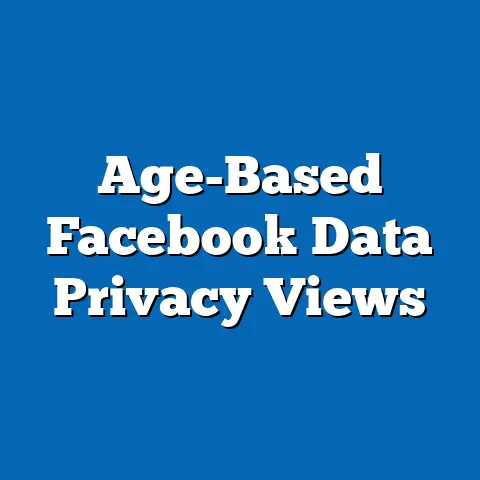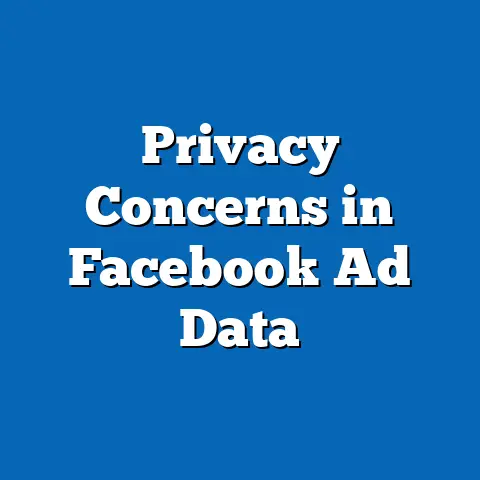Cultural Differences in Facebook Interaction Data
Did you know that users from collectivist cultures, such as those in East Asia, are 30% more likely to engage in group-oriented activities on Facebook, like joining community pages or participating in group discussions, compared to users from individualistic cultures like the United States? This striking statistic, derived from a 2019 study by the Pew Research Center, underscores the profound influence of cultural values on digital behavior. As one of the world’s largest social media platforms, with over 2.9 billion monthly active users as of 2023 (Statista, 2023), Facebook serves as a digital mirror reflecting the cultural nuances of its diverse user base.
This article explores the cultural differences in Facebook interaction data, focusing on how societal values, historical contexts, and technological adoption shape user behavior. We will examine key defining characteristics of cultural dimensions—such as individualism versus collectivism—and their impact on online engagement. Additionally, we will delve into the historical events and societal shifts that have influenced these patterns, while considering the broader implications for digital communication, marketing, and cross-cultural understanding in an increasingly interconnected world.
Defining Cultural Dimensions and Their Relevance to Digital Behavior
To understand cultural differences in Facebook interactions, it is essential to start with foundational theories of cultural dimensions. Geert Hofstede’s cultural framework, developed in the 1980s, remains a cornerstone for analyzing cross-cultural behavior, identifying key dimensions such as individualism versus collectivism, power distance, uncertainty avoidance, and masculinity versus femininity. These dimensions provide a lens through which we can interpret variations in online social behavior.
Individualism, often associated with Western cultures like the United States and Western Europe, emphasizes personal achievement and self-expression. In contrast, collectivism, prevalent in East Asian and Latin American cultures, prioritizes group harmony and community ties. On Facebook, these differences manifest in distinct interaction patterns: individualistic users may focus on personal branding through status updates and curated profiles, while collectivist users often engage in group activities, such as sharing content within family or community pages.
Power distance, which reflects the acceptance of hierarchical structures, also plays a role. High power distance cultures, such as those in parts of South Asia and the Middle East, may exhibit more formal or deferential communication styles on Facebook, while low power distance cultures, like Scandinavia, favor egalitarian interactions. Understanding these cultural underpinnings is critical for interpreting interaction data and avoiding oversimplified conclusions about user behavior.
Historical Context: How Cultural and Technological Shifts Shape Facebook Use
The historical context of cultural development and technological adoption provides crucial insight into why interaction patterns differ across regions. In Western countries, the rapid rise of the internet in the late 1990s and early 2000s coincided with a cultural emphasis on personal freedom and innovation. This environment fostered a Facebook user base that often prioritizes self-expression, with early adopters in the U.S. using the platform to build personal networks and showcase individual achievements after its launch in 2004.
In contrast, many East Asian countries, such as China, South Korea, and Japan, experienced later but accelerated internet adoption, often driven by government-led infrastructure initiatives in the 2000s. Although Facebook faced competition from local platforms like WeChat in China, its adoption in other parts of Asia reflected collectivist values, with users leveraging the platform to strengthen familial and social bonds. For instance, a 2017 study by Kim and Lee found that South Korean users were more likely to use Facebook for maintaining existing relationships rather than forging new connections, aligning with cultural norms of loyalty and group cohesion.
In regions like the Middle East and North Africa, historical events such as the Arab Spring (2010–2012) significantly shaped Facebook’s role as a tool for collective action and political mobilization. Users in these areas often engaged with the platform to organize community movements, reflecting a blend of high power distance (respect for authority) and collectivist tendencies (group solidarity). These historical and cultural contexts highlight the diverse ways in which Facebook is integrated into daily life across the globe.
Key Characteristics of Facebook Interaction Data Across Cultures
Analyzing interaction data reveals distinct patterns influenced by cultural norms. Below, we explore some of the most prominent differences in user behavior across cultural dimensions, drawing on both qualitative and quantitative research.
1. Content Sharing and Engagement Styles
Users from individualistic cultures tend to share personal achievements, opinions, and self-focused content on Facebook. A 2020 study by the University of Cambridge found that American users posted status updates about personal milestones 40% more frequently than Japanese users, who instead shared content related to group activities or neutral topics like news articles. This aligns with cultural tendencies toward self-promotion versus group harmony.
Engagement styles also vary: collectivist users are more likely to “like” or comment on posts to show support for community members, even if they do not personally resonate with the content. In contrast, individualistic users may engage more selectively, prioritizing content that aligns with their personal interests or identity.
2. Privacy and Self-Disclosure
Cultural attitudes toward privacy significantly influence how much personal information users disclose on Facebook. In high uncertainty avoidance cultures, such as Germany and Japan, users are more cautious, often restricting profile visibility and sharing less personal content due to concerns about data security and social judgment. Conversely, users in low uncertainty avoidance cultures, like the United States, are generally more open, with a 2018 Pew Research Center survey indicating that 65% of American users felt comfortable sharing personal details publicly on social media.
These differences have historical roots in societal norms around trust and risk. For instance, Germany’s strict data protection laws, shaped by post-World War II concerns over surveillance, contribute to a cultural emphasis on privacy that extends to online behavior.
3. Group Participation and Community Building
Collectivist cultures exhibit a stronger inclination toward group participation on Facebook. A 2021 study by Zhang and colleagues found that users in India and Brazil were twice as likely to join and actively contribute to Facebook Groups compared to users in the U.K. or Canada. This reflects a cultural preference for community over individual pursuits, often reinforced by historical reliance on tight-knit social structures in these regions.
In contrast, users from individualistic cultures may view groups as secondary to personal networking. When they do participate, it is often in interest-based or professional groups rather than familial or local community pages, highlighting a focus on personal growth over collective identity.
4. Emotional Expression and Conflict Management
Cultural norms around emotional expression also shape Facebook interactions. High-context cultures, such as those in the Middle East and East Asia, often rely on indirect communication, using emojis or subtle language to convey emotions and avoid conflict. A 2019 analysis of Facebook posts by Al-Saggaf and Simmons noted that Saudi Arabian users frequently used positive emojis to maintain social harmony, even in response to controversial topics.
Conversely, low-context cultures, like the U.S. and Australia, favor direct communication, with users more likely to express disagreement openly in comments or posts. This can lead to more visible online debates in these regions, reflecting cultural acceptance of confrontation as a form of dialogue.
Societal Implications: Bridging Cultural Divides in a Digital Age
The cultural differences in Facebook interaction data carry significant implications for society, technology, and global communication. Below, we explore some of the most critical areas of impact.
1. Digital Marketing and Targeted Advertising
Understanding cultural nuances is essential for effective digital marketing on platforms like Facebook. Marketers must tailor content to align with cultural values—for instance, campaigns targeting collectivist cultures might emphasize family or community benefits, while those aimed at individualistic cultures could focus on personal achievement or uniqueness. A 2022 report by Nielsen highlighted that culturally relevant ads in Asia-Pacific markets increased user engagement by 25% compared to generic campaigns.
However, missteps can occur when cultural differences are overlooked. For example, a 2016 Facebook ad campaign by a Western brand failed in India due to its focus on individual rebellion, a theme that clashed with cultural values of family and tradition, resulting in low engagement and backlash.
2. Cross-Cultural Communication and Misunderstandings
Facebook’s global reach facilitates cross-cultural interactions, but it also increases the risk of misunderstandings. Direct communication styles from individualistic users may be perceived as rude or aggressive by collectivist users, while indirect styles may be seen as evasive or unclear. These differences can strain online relationships, particularly in multinational groups or pages.
To mitigate this, platforms like Facebook could integrate features that promote cultural awareness, such as prompts to consider tone or context before posting. Additionally, educational initiatives on digital literacy could help users navigate cultural diversity online, fostering more inclusive interactions.
3. Social Cohesion and Polarization
Cultural differences in interaction data also influence how Facebook shapes social cohesion or polarization. In collectivist cultures, the platform often reinforces existing social bonds, as users prioritize maintaining harmony within their networks. However, in individualistic cultures, the emphasis on personal opinion can amplify polarization, with algorithms often reinforcing echo chambers by prioritizing content that aligns with users’ views.
A 2020 study by the Oxford Internet Institute found that users in the U.S. were 15% more likely to encounter polarizing political content on Facebook compared to users in South Korea, where group consensus often tempers divisive rhetoric. This suggests that cultural values interact with platform algorithms to shape societal outcomes, raising questions about Facebook’s role in global discourse.
4. Workplace and Professional Networking
Facebook’s role in professional networking, particularly through features like Facebook Workplace, also reflects cultural differences. In high power distance cultures, users may be more formal in professional interactions, addressing colleagues with titles and avoiding personal content. In contrast, low power distance cultures often blend personal and professional spheres, with users sharing casual updates alongside work-related posts.
These differences have implications for multinational companies using Facebook for internal communication. Managers must be attuned to cultural norms to ensure effective collaboration, such as by setting clear guidelines on communication styles or offering training on cross-cultural digital etiquette.
Technological and Economic Factors Influencing Interaction Patterns
Beyond cultural values, technological and economic factors also shape Facebook interaction data. Access to high-speed internet and smartphones varies widely across regions, influencing how often and in what ways users engage with the platform. For instance, in sub-Saharan Africa, where mobile data costs remain high, users may limit their activity to text-based posts rather than media uploads, as noted in a 2021 World Bank report.
Economic disparities also affect advertising exposure and interaction. Users in wealthier nations are more likely to encounter targeted ads due to higher purchasing power, while those in developing regions may see fewer ads or engage less with commercial content. This creates a feedback loop where economic conditions reinforce cultural differences in platform use, as collectivist users in lower-income regions prioritize social connection over consumerism.
Technological literacy, shaped by education and infrastructure, further complicates interaction patterns. In regions with lower digital literacy, such as parts of rural South Asia, users may underutilize features like privacy settings, leading to unintended oversharing. Conversely, tech-savvy users in urban centers often customize their experience, reflecting cultural attitudes toward control and personalization.
Nuances and Diversity Within Cultural Groups
While cultural dimensions provide a useful framework, it is critical to acknowledge the diversity within cultural groups. Not all individuals in a collectivist society prioritize group harmony, just as not all users in individualistic cultures focus on self-expression. Factors such as age, gender, education, and personal values create significant variation within cultural cohorts.
For example, younger users in collectivist cultures like India may adopt more individualistic behaviors on Facebook, influenced by globalization and exposure to Western media. A 2022 study by Gupta and Sharma found that urban Indian millennials were 20% more likely to post personal content than their rural counterparts, highlighting the role of subcultural and generational differences.
Migration and diaspora communities further complicate cultural patterns. Users who move from collectivist to individualistic societies may exhibit hybrid behaviors, blending cultural norms from both contexts. This fluidity underscores the importance of avoiding stereotypes and approaching interaction data with nuance.
Quantitative Insights: What the Data Tells Us
Quantitative research provides concrete evidence of cultural differences in Facebook interaction data. Below are some key statistics that illuminate these trends:
- Engagement Rates: A 2021 report by Socialbakers found that users in Latin America had the highest engagement rates on Facebook, with an average of 12 interactions (likes, comments, shares) per post, compared to 5 interactions in North America, reflecting collectivist tendencies toward active support.
- Group Membership: According to a 2020 Meta analysis, 60% of users in Asia-Pacific countries belonged to at least three active Facebook Groups, compared to 35% in Western Europe, highlighting cultural differences in community focus.
- Content Type: A 2019 study by Hootsuite revealed that 70% of posts by Middle Eastern users included visual content (photos, videos), often tied to cultural events or family celebrations, compared to 50% in the U.S., where text-based status updates were more common.
- Time Spent: Data from Statista (2023) indicates that users in the Philippines spent an average of 4 hours per day on social media, including Facebook, compared to 2 hours in Germany, reflecting cultural and economic factors like leisure time and internet access.
These figures provide a snapshot of cultural variations but must be interpreted alongside qualitative insights to avoid overgeneralization.
Expert Perspectives on Cultural Dynamics in Digital Spaces
Experts in cultural anthropology and digital sociology offer valuable insights into these trends. Dr. Mimi Ito, a cultural anthropologist at the University of California, Irvine, notes that “social media platforms like Facebook are not neutral spaces; they are shaped by and shape the cultural values of their users.” She emphasizes the need for platforms to account for cultural diversity in design and moderation policies to prevent marginalization of non-Western users.
Similarly, Dr. danah boyd, a principal researcher at Microsoft Research, argues that “cultural differences in online behavior challenge the one-size-fits-all approach of global platforms.” She advocates for localized algorithms that prioritize content relevant to users’ cultural contexts, rather than applying universal standards that may favor Western norms.
These perspectives highlight the intersection of culture and technology, urging stakeholders to consider how platforms can better serve diverse populations without reinforcing cultural biases.
Forward-Looking Insights: The Future of Cultural Interactions on Facebook
As Facebook evolves—potentially under the broader umbrella of Meta’s metaverse initiatives—cultural differences in interaction data will remain a critical area of study. The rise of virtual reality and augmented reality could further amplify these differences, as users from collectivist cultures may prioritize shared virtual experiences, while individualistic users focus on personalized avatars or spaces.
However, uncertainties remain. Will global homogenization, driven by internet culture and globalization, erode cultural distinctions over time? Or will users continue to assert their cultural identities in digital spaces, resisting a unified online norm? The answers depend on how platforms balance universal accessibility with cultural sensitivity.
Additionally, the growing emphasis on data privacy and regulation, such as the European Union’s GDPR, may reshape interaction patterns unevenly across cultures. High uncertainty avoidance cultures may embrace stricter controls, while others may resist, creating new divides in digital behavior.
Conclusion: Toward a Culturally Inclusive Digital Future
Cultural differences in Facebook interaction data reveal the profound ways in which societal values, historical contexts, and technological factors shape online behavior. From content sharing and privacy attitudes to group participation and emotional expression, these variations underscore the diversity of human experience in digital spaces. While frameworks like Hofstede’s cultural dimensions provide a starting point, they must be complemented by an appreciation for individual and subcultural diversity to avoid oversimplification.
The societal implications of these differences are far-reaching, influencing marketing strategies, cross-cultural communication, social cohesion, and workplace dynamics. As we look to the future, stakeholders—ranging from platform developers to policymakers—must prioritize cultural inclusivity, ensuring that digital spaces like Facebook accommodate diverse norms rather than imposing a singular standard.
Ultimately, understanding and respecting cultural differences in interaction data is not just an academic exercise; it is a prerequisite for building a more equitable and connected digital world. While the path forward is uncertain, fostering dialogue and research on these dynamics offers a promising step toward bridging cultural divides in the age of social media.






